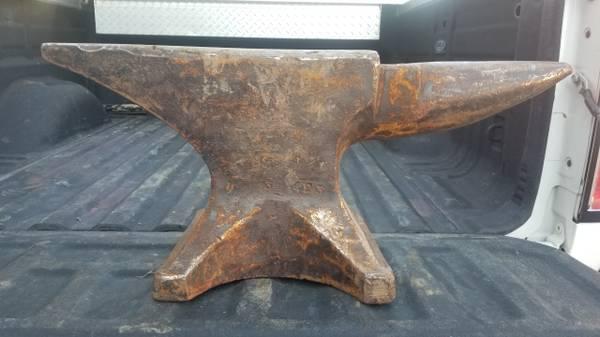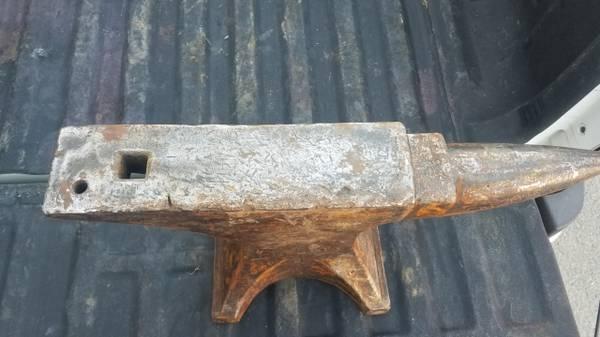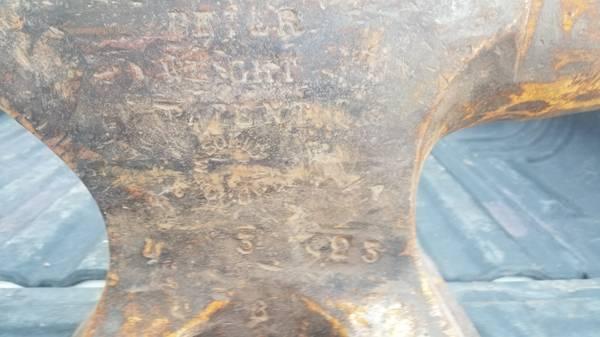
marooner
-
Posts
9 -
Joined
-
Last visited
Content Type
Profiles
Forums
Articles
Gallery
Downloads
Events
Posts posted by marooner
-
-
I have a vague memory of asking this one time, but just to be sure, I'm going to ask it again here. Sorry if my question is ignorant or has been answered before on this site.
Some time ago, my dad brought home a giant box of combination wrenches that were given to him. The majority, if not all of them, are from Craftsman and Allen. I'd like to be able to utilize the duplicate wrenches (or those we have no use for) and turn them into something resembling a fishing knife. From what I know, the combination wrenches are chrome and nickel-plated and drop-forged from chromium-vanadium steel, and to be able to safely forge them, you have to strip the chrome plating off.
My issue is that I'm confused on how to strip the plating. I've heard people talk about grinding it off, but I feel like doing so is going to result in me losing a lot of material and using a die grinder may not be perfect inside and around the ring part. Can anybody give me some tips for grinding or alternative methods for removing the chrome? Also, is forging cro-van steel safe, and if so, does anyone have any tips on forging, hardening, and tempering it? Thanks. (Keep in mind I'm on as tight of a budget as possible.)
-
Thanks so much! I think that I can finish up my forge by next week. Just have to wait for everything to arrive...
-
50 minutes ago, Frosty said:
The coating on/in the pipe is from the manufacturer as a rust preventative and should strip easily enough. I don't know what kind of fumes it might give off not knowing who or where it was made. I usually just toss it on a scrap wood or brush burn pile if I need the coating gone.
Perhaps warming it to a couple few hundred degrees F. and wire brushing will strip it without fumes.
But yes the coating will burn off in the forge.
Frosty The Lucky.
Frosty, the paint is on the inside, sadly. Any ways for that, or would I heat it up and wait for the paint to fall off or something?
-
Charles, I appreciate the input, but the question I'm asking here isn't concerning the air supply, and now that I say that, I realize that the title wasn't such a good choice. The real question for me if whether or not the paint that is inside of the pipe that I bought for funneling air into the coals will pose a problem. It will rest underneath the bed of coals with holes drilled into it from the side, so the pipe will most likely get very hot on the exterior, while I have no idea if the interior will be fine.
-
I'm not sure if this is the right place to post this, but anyways, a bit of context: I've been building a small charcoal forge out of an old water heater that has been cleaned out. I'm planning on filling the inside with some fire bricks and coating them with a layer of 3000 degree black furnace cement, but then the real problem comes. The air supply is a converted blower that has been turned from an electrically-powered one to a blower with a crank, but the pipe that will funnel the air supply was painted. (The pipe will be placed on the bottom of the forge and have holes drilled in it to allow air flow from the pipe into the coals.) It's a pipe from Lowes, called the Mueller Proline Black Iron Pipe or something like that. The outside has some paint, which can be taken care of with rough sandpaper and a utility knife, but so does the inside. I'm just concerned about the paint on the inside. Will the pipe be ok, or will the paint release fumes that aren't good for me? In the case that it will produce bad fumes, is there any way for me to remove the paint on the inside?
How my air supply pipe will work (based off of this design): https://www.youtube.com/watch?v=jDnbScHmxZQ&t=55s
-
The one main problem I have with the PW is its weight, which normally isn't a bad thing. This may sound naive, but I really don't have the type of space or strength to carry that around, and when that's paired with the fact that I don't have a shop and do my work in the backyard, it's kind of a pain to move around. Also, as I mentioned above, the shape it's in (lots of dents in the face) might affect the final product and I have no idea how to fix it. My current plan is to just go for the cheap ASO and maybe/hopefully find a better deal on an anvil when I really need to upgrade it. What do you think?
-
1 hour ago, stevomiller said:
Welcome!
Yes anvils are stupid expensive in California.
Honestly I wouldn’t give $700 for it. Id Save a bit more and get a Holland, Nimba, Hoffman or other new anvil.
Also, welding and grinding is generally a bad idea on an anvil unless you are extremely well versed and skilled in anvil repair. It’s a lot easier to make it worse that better, even to the point of no return.
Alright, thanks! The thing is, I'm by no means experienced. The most I've ever done in my history with smithing was making a few hooks and a fire poker on a 100 pound Vulcan, which in my opinion is actually a fairly competent anvil to learn and practice on. What I'm going for, because my main goal is small projects like chef knives and small fixed blades, is a 66 pound cast steel anvil I found on eBay which goes for $140 (there's some reviews on it, apparently a former Forged in Fire champion says they're pretty good). If I feel the need to upgrade to something a little better I'll do just that, but for now, seeing as I'm really inexperienced, I'll stick with the cheap cast steel anvil.
1 hour ago, ThomasPowers said:I think the biggest barrier to getting started is the unfounded belief that there are "proper tools" one must have to get started. You can go to my local scrapyard and buy a better anvil than the viking swords were forged on for US 20 cents a pound. It will look a lot more like anvils have looked for around 3000 years and not like the London pattern anvil which got it's current shape around 200 years ago.
The real problem I have with using an ASO is that they're really just a temporary replacement for an anvil, as eventually you'll get an actual anvil to work on. It seems to me that owning an actual anvil to practice and work on is better than using something that won't be necessarily used once you transition from a railroad track or big slab of steel to something more substantial. I'll keep the advice about not grinding it unless I know exactly what I'm doing, though. Just not sure if those dings on the surface may affect my work. I think that I'll check it out when I have the time.
-
Hi, I'm fairly new to this forum, and after browsing around, decided to make an account on account of anvils. Arguably, the most difficult part of starting out blacksmithing is finding the proper tools, but this applies especially to anvils (as I believe) as they are varied, expensive, difficult to move around, and overall requires a lot of work to acquire a good one. However, I believe I may have found something great 138 miles from me is a 219 pound Peter Wright anvil going for $700. Not exactly the best price ($3.12 a pound) but in my part of California that's pretty much the best you'll get. There are a lot of visible dings and imperfections, and I can't do anything about those because I don't own a welder, much less filler rods. The question for me right now is if I should go the distance and purchase this anvil, clean it up with an angle grinder, and simply call it a day, or should I purchase another option I've heard was good?
Here's the pictures.



Craigslist link removed
Wrench Knives?
in Knife Making
Posted
That's slightly disappointing, I thought that wrenches would be high carbon steel. I guess I can still forge with them for practice. Thanks for the warning about chrome.
Also I notice your profile says you live around El Paso. Hope you haven't been affected by recent events.